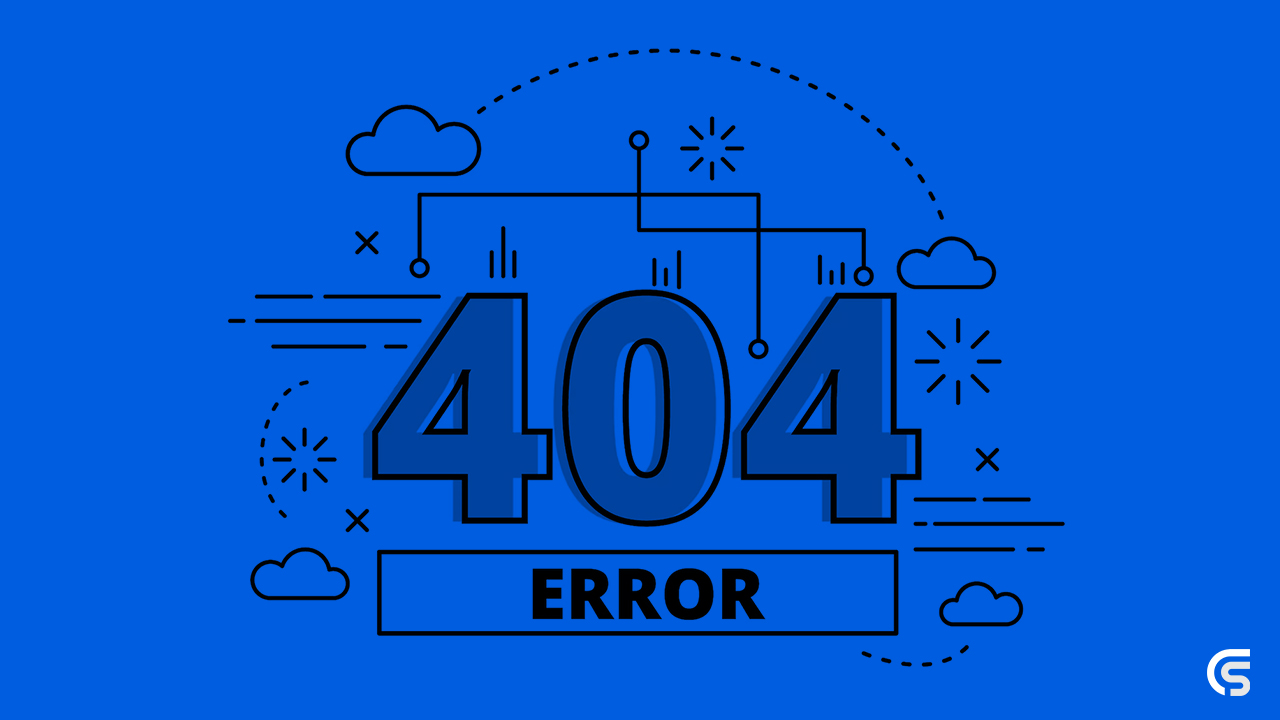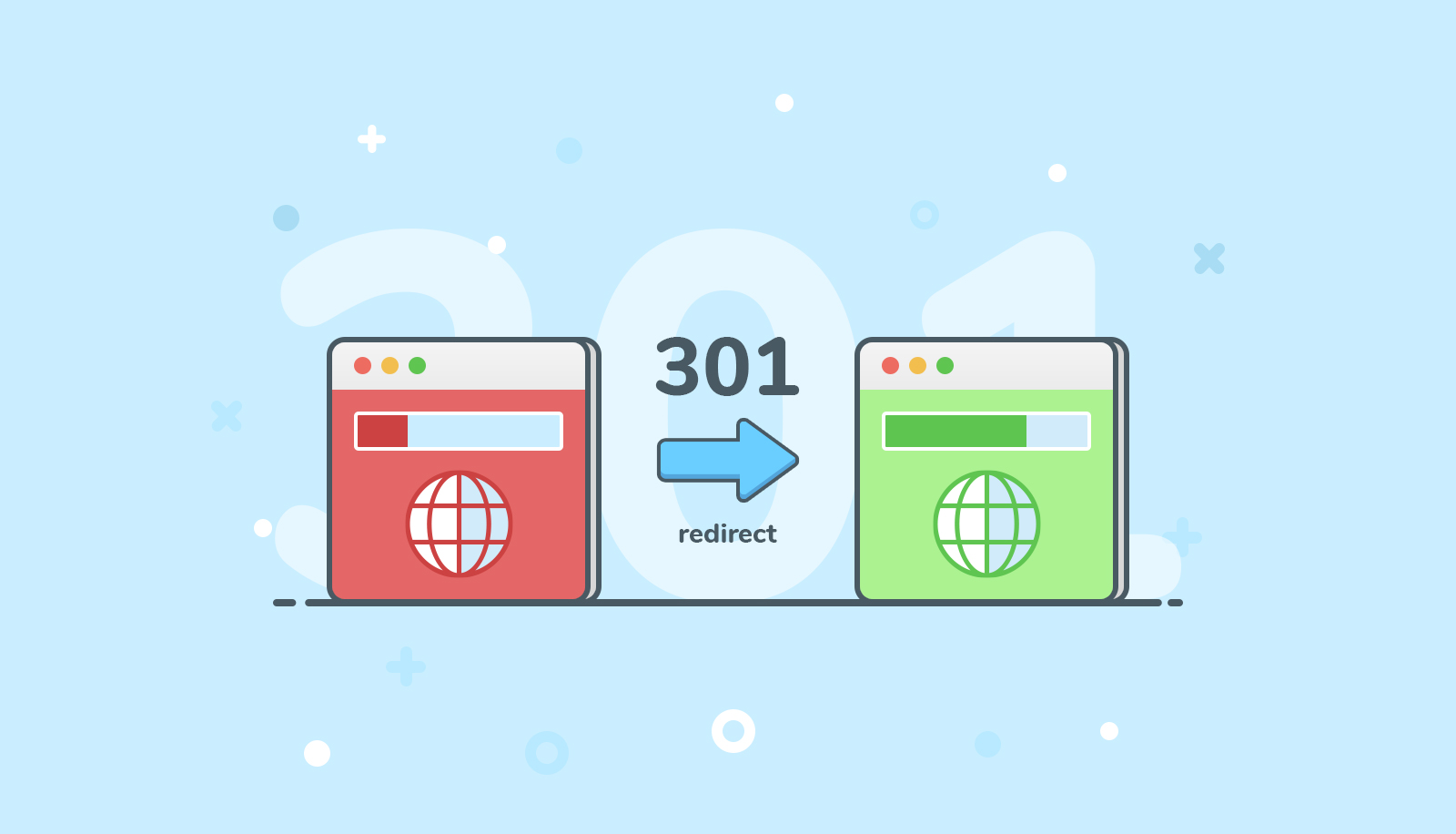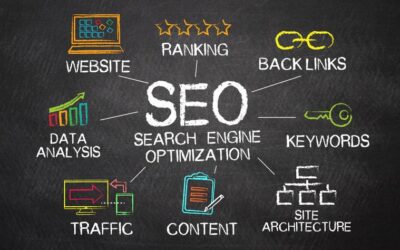Migrating a website is a milestone moment for any business. Done correctly, it can unlock growth, improve user experience, and strengthen your brand. Done poorly, it can wipe out years of SEO progress and cause a dramatic loss in traffic.
The question on every marketer’s mind is: how to migrate the site without losing traffic?
This guide provides a complete playbook from planning and execution to monitoring and recovery, enabling you to protect your visibility and leverage migration as an opportunity for growth.
Table of Contents:
- What Is Website Migration?
- Why Do Businesses Migrate Websites?
- The Risks of Poorly Executed Migrations
- How to Migrate a Site Without Losing Traffic: Step-by-Step Guide
- SEO Considerations During Migration
- 5 Key Questions About Migration Answered
- Common Mistakes to Avoid
- Case Studies: Migration Success vs. Failure
- Post-Migration Checklist
- Conclusion: Safeguard Your Website’s SEO
What Is Website Migration?
At its core, website migration is any substantial change to a website that can affect its search engine visibility, structure, and user experience. While minor tweaks like editing a blog post or swapping an image aren’t considered migrations, large-scale changes that alter the way Google indexes your site or how visitors navigate it fall under this category.
In simple terms, migration involves transforming your website in a way that requires both users and search engines to adapt to the new version.
Why It Matters
Website migration is not just a technical process; it directly impacts your SEO equity. Search engines assign value to your site over time through backlinks, indexing, and content authority. If migration is poorly handled, much of this “SEO currency” can be lost. On the other hand, a well-executed migration can strengthen rankings, improve site speed, and enhance user experience, giving you an edge over competitors.
Types of Website Migrations (Explained in Depth)
- Domain Migration
- Example: Moving from mybrand.net to mybrand.com.
- Often tied to rebranding, global expansion, or switching to a more authoritative domain extension.
- SEO Risk: If redirects aren’t set up, your backlinks pointing to the old domain no longer pass authority to the new one.
- Protocol Migration (HTTP → HTTPS)
- Google has made HTTPS a ranking factor, and it’s also essential for user trust.
- Migrating from HTTP to HTTPS ensures data security and can reduce bounce rates since browsers now flag non-HTTPS sites as “Not Secure.”
- SEO Risk: If internal links still point to HTTP pages, you risk duplicate content and crawl inefficiencies.
- CMS / Platform Migration
- Example: Switching from WordPress to Shopify, or Drupal to HubSpot.
- Businesses do this when their existing CMS is outdated, burdensome to scale, or lacking modern integrations.
- SEO Risk: Many CMSs generate different URL structures by default (e.g., domain.com/p=123 vs. domain.com/product/widget). If mappings aren’t carefully handled, rankings can plummet.
- Site Redesign / UX Overhaul
- Involves updating themes, templates, navigation, and visual hierarchy.
- It can dramatically improve conversion rates and mobile friendliness.
- SEO Risk: If designers prioritize aesthetics over SEO, you might lose critical internal linking, heading structures, or content that drives rankings.
- Content Restructuring
- Includes reorganizing categories, merging or splitting sections, or deleting old content.
- Helpful for cleaning up thin content, aligning with user journeys, or simplifying navigation.
- SEO Risk: Removing old content without redirects may erase years of rankings for niche long-tail keywords.
Why Do Businesses Migrate Websites?
Website migration isn’t something companies do on a whim. It’s usually a strategic decision tied to growth, branding, or technology needs. Businesses migrate when their current site no longer supports their goals, customers, or long-term vision.
Below are the five most common reasons for website migration, and understanding them is key to migrating a site without losing traffic.
1. Branding & Domain Authority
A brand’s digital identity often evolves. Companies may:

- Acquire a new domain that better represents their global presence.
- Example: A local company using mybrand.net decides to upgrade to mybrand.com for international credibility.
- Drop outdated names that no longer align with their business identity.
- Example: A startup that began as greenfoodsdelivery.com might rebrand to greenfoods.com once it expands into retail and wholesale.
💡 SEO Implication: Search engines build authority around domains. Changing domains without proper redirects risks losing years of accumulated trust, backlinks, and rankings. When handled carefully, however, a domain migration can strengthen authority and improve click-through rates (since shorter, cleaner domains often attract more clicks).
2. Platform Limitations
- Legacy CMS systems often slow down site speed and make mobile optimization difficult.
- Outdated platforms often lack modern marketing integrations, such as advanced analytics, e-commerce functionality, or automation tools.
- A retail brand stuck on an old Magento version might migrate to Shopify Plus for better scalability, easier product management, and faster site performance.
- A B2B company might move from Drupal to HubSpot CMS to streamline marketing campaigns and CRM integration.
💡 SEO Implication: A sluggish CMS can hurt Core Web Vitals scores, which are direct ranking factors. By migrating to a faster, more flexible platform, businesses improve both SEO and user experience.
3. SEO Improvements
- Moving from HTTP to HTTPS: Essential for user trust and a confirmed Google ranking signal.
- Rebuilding for Core Web Vitals compliance: Sites with faster load times, responsive designs, and stable elements rank better.
- Cleaning up content bloat: Removing outdated, duplicate, or thin content improves site crawl efficiency.
- A publishing company with thousands of outdated blog posts may migrate to a new structure, merging low-performing content into comprehensive guides. This improves topical authority and reduces keyword cannibalization.
4. Mergers or Consolidations
- Example: A software company acquires two competitors and merges all three websites into one flagship domain.
- Benefit: By consolidating backlinks and authority from three domains, the new site becomes a powerhouse of authority.
💡SEO Implication: Consolidation boosts domain authority and keyword coverage, but only if redirects are meticulously managed. Without proper mapping, valuable content and backlinks from acquired domains may vanish from Google’s index.
5. UX & Conversion Optimization
Ultimately, the goal of any website is to serve users and drive conversions. Businesses migrate when their old site no longer delivers the desired results.
- Creating mobile-first designs: With Google’s mobile-first indexing, a poor mobile experience can tank rankings.
- Simplifying navigation: Overly complex menus frustrate users and increase bounce rates.
- A financial services firm with a cluttered, outdated site migrates to a cleaner, modern design with clear calls-to-action. The result? Higher engagement, more leads, and stronger SEO signals, such as longer dwell time.
💡SEO Implication: Search engines reward sites that provide a seamless user experience. A redesign migration focused on UX can increase both rankings and conversion rates when done carefully.
📊 The Numbers Don’t Lie
- Forget redirects.
- Ignore metadata.
- Fail to test staging environments.
- Launch without monitoring SEO performance.
The Risks of Poorly Executed Migrations
Let’s be direct: a poorly managed migration can destroy years of SEO equity and business growth in a matter of days. While a well-executed migration sets the stage for long-term success, mistakes in this process can cause lasting damage that takes months or even years to recover from.
Below are the most critical risks you face when migration is mishandled.
1. Traffic Loss

- Old URLs may return 404 errors (“page not found”).
- Valuable backlinks pointing to those pages now lead to dead ends.
- Search engines drop pages from their index because they can’t crawl them properly.
👉 Example: A tech startup failed to implement a 301 redirect map during a platform switch. Within one month, their organic visits dropped by 45%, and competitors quickly filled the rankings gap.
2. Ranking Drops
- If metadata (titles, descriptions, H1s) isn’t transferred, keyword rankings vanish.
- If canonical tags aren’t updated, search engines may index duplicate versions.
- If page speed slows down on the new platform, rankings suffer.
⚠️ The scary part? Ranking drops don’t just hurt vanity metrics; they directly impact lead generation, sales, and visibility. Years of investment in SEO can disappear in weeks.
3. Conversion Decline
- Confusing new navigation can frustrate visitors.
- Broken forms, checkout errors, or missing calls-to-action tank conversion rates.
- A sudden design overhaul without UX testing may alienate loyal customers.
4. Wasted Marketing Spend
- PPC ads pointing to old URLs send traffic to broken pages.
- Social media links shared in the past no longer work.
- Email campaigns that include outdated URLs result in higher bounce rates.
This not only wastes budget but also creates negative user experiences, reducing trust in your brand.
5. Brand Damage
- Trust is fragile online. Users may wonder: If this company can’t manage their website, can I trust them with my credit card or business data?
- A messy migration can damage reputation across multiple channels, from online reviews to social media chatter.
Brand damage is more complex to measure than traffic loss, but it can have the longest-lasting impact.
⚠️ Real-World Example
- Within weeks, their organic sessions dropped by 60%.
- Thousands of backlinks that once drove authority now led to error pages.
- Paid ad campaigns had to be doubled to make up for the lost organic sales.
How to Migrate a Site Without Losing Traffic: Step-by-Step Guide
Here’s the detailed roadmap:
1. Pre-Migration Preparation
- Crawl existing site: Export every URL, meta tag, and ranking page.
- Identify top performers: Blog posts, landing pages, and products that bring in the most traffic.
- Set benchmarks: Record baseline traffic, conversions, and keyword rankings.
🔑Pro tip: Use tools like Screaming Frog + SEMrush to capture a complete snapshot.
2. Build & Test in a Staging Environment
- Mirror the site on a staging domain.
- Block staging from Google with noindex.
- Validate site speed, mobile experience, and security.
- Map every old URL → new URL (one-to-one where possible).
- Use 301 redirects, not 302.
- Avoid redirect chains (old → middle → new).
- Keep top-performing content exactly as-is.
- Copy all meta tags, H1s, alt attributes, and schema markup.
- Ensure consistency in canonical tags.
- Update XML sitemap & robots.txt.
- Set canonicalization rules.
- Ensure HTTPS is enforced sitewide.
- Check the structured data testing tool.
- Launch during low-traffic hours.
- Announce the update internally so sales & support teams are prepared.
- Monitor server logs in real time.
- Submit sitemap to Google Search Console.
- Track crawl errors & coverage reports daily.
- Compare ranking changes weekly.
- Audit backlinks, update them when possible.
SEO Considerations During Migration
Here are the most critical SEO considerations to protect visibility during migration:

Backlinks are the backbone of SEO. Over the years, your site has likely accumulated links from blogs, news outlets, directories, and partners. If you don’t implement 301 redirects, all of that “link juice” (ranking power) is wasted.
- Use 301 permanent redirects for every old URL to its closest new equivalent.
- Avoid sending all pages to the homepage, as it dilutes relevance and confuses both users and Google.
- Test your redirect map with a crawling tool before launch.
👉 Example: If oldsite.com/blog/seo-tips is now newsite.com/resources/seo-tips, redirect directly to that page, not just newsite.com.
2. Consistent Metadata
Google relies on metadata titles, descriptions, and headers to understand page relevance. If you lose or change this data during migration, your rankings for core keywords may drop.
- Export all metadata from your old site before migration.
- Ensure every title tag, meta description, H1, and alt attribute is carried over to the new site.
- Only update metadata if you’re intentionally optimizing it (and even then, do it gradually).
👉 Example: If your old homepage ranked for “affordable car insurance quotes” due to its optimized title tag, but your new homepage says “Home,” you’ll lose keyword relevance.
3. Canonical Tags
Duplicate content can confuse search engines, especially if your old URLs and new URLs temporarily coexist. Canonical tags tell Google which version is the “master” copy to index.
- Update canonical tags to reflect new URLs.
- Don’t leave canonicals pointing to the old domain or staging site.
- Use self-referencing canonicals on key pages for clarity.
👉 Example: If both newsite.com/product/shoes and newsite.com/shoes exist, set a canonical so Google knows which one to rank.
4. Update Internal Links
Internal links are like road signs for both users and search engines. If they point to old URLs, visitors will bounce through redirects, slowing down page speed and reducing crawl efficiency.
- Update all internal links to point directly to the new URLs.
- Pay special attention to navigation menus, footer links, and high-traffic blog posts.
- Use a crawler post-launch to identify any remaining outdated links.
👉 Example: If your blog posts still link to oldsite.com/contact, users will hit a redirect instead of the new newsite.com/contact-us page. That’s bad UX and wasted crawl budget.
5. Re-Submit Disavow File
If you’ve ever cleaned up spammy backlinks by uploading a disavow file to Google, those settings do not automatically carry over during a domain migration. Without resubmitting, you risk having toxic backlinks counted against your new site.
- Download your disavow file from Google Search Console before migration.
- Re-submit it immediately after launching the new site.
👉 Example: A business that fought off a negative SEO attack years ago forgot to re-upload its disavow file. Within two months of migrating, their rankings plummeted because toxic backlinks resurfaced in Google’s evaluation.
6. Bonus Considerations for a Smooth SEO Transition
- XML Sitemap: Always create and submit a fresh sitemap with the updated URLs. This helps Google discover your new site quickly.
- Robots.txt: Double-check that important pages aren’t accidentally blocked during migration.
- Structured Data: Preserve schema markup (reviews, products, FAQs) to maintain rich snippets in search results.
- Analytics & Tracking: Ensure GA4, Tag Manager, and other analytics scripts are correctly installed on the new site.
5 Key Questions About Migration Answered
- Usually, 6–12 weeks with proper planning.
- Poor migrations may take 6+ months.
2. Is HTTPS migration worth it?
Absolutely. Google confirmed HTTPS is a ranking signal, and users trust secure sites.
3. Should I change content during migration?
Avoid major changes. First stabilize SEO, then update content.
4. Can I rely only on redirects?
No redirects help, but you should also proactively update backlinks and internal links.
5. Will I lose all rankings temporarily?
Common Mistakes to Avoid
- Redirecting all old pages to the homepage.
- Forgetting mobile-first indexing.
- Failing to update Google Analytics tags.
- Launching during peak sales season.
- Not testing on staging first.
Case Studies: Migration Success vs. Failure
- Old domain: appsoft.io → New domain: appsoft.com.
- 301 redirects implemented flawlessly.
- Within 8 weeks, traffic grew by 15%.
- Migrated during Black Friday week.
- Redirects were not mapped for 5,000+ product pages.
- Organic sales dropped by 40% in a month.
Post-Migration Checklist
Conclusion: Safeguard Your Website’s SEO
Website migration is a high-stakes SEO project, not just a technical upgrade. Done correctly, it can boost authority, traffic, and conversions. Done poorly, it can erase years of hard work.
If you want to master how to migrate a site without losing traffic, remember:
- Plan carefully
- Protect SEO assets
- Monitor constantly

At Excell, we specialize in seamless migrations that protect and grow your online visibility. Whether you’re rebranding, upgrading platforms, or consolidating multiple sites, our experts ensure your migration is smooth and stress-free.
👉 Don’t risk losing your hard-earned traffic. Contact us today and Book your free discovery call to get done for your services.
Contact us:
6420 Richmond Ave., Ste 470
Houston, TX, USA
Phone: +1 832-850-4292
Email: info@excellofficial.com







